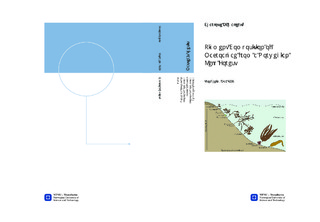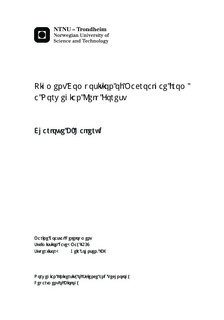| dc.description.abstract | Variation in pigment composition between seasons in 10 different species of macroalgae was examined using high precision liquid chromatography (HPLC). In addition, a study on the variation of pigment quantity and quality with tissue age was performed on the kelp Saccharina latissima. All species contained Chlorophyll a (Chl a), and all Phaeophytes contained the accessory chlorophylls, Chl c1+2 in addition to the carotenoids fucoxanthin, violaxanthin, antheraxanthin and zeaxanthin. In the two Rhodophytes examined, the major pigments in addition to Chl a was β,β-carotene and zeaxanthin. Within each species, the light harvesting pigments follows the same tissue concentration trend as Chl a. No similar trend of seasonal variation in pigment composition was seen between species. In the Phaeophytes, the three Fucus species tended to have high pigment content, while Ascophyllum nodosum was recurring as the species with the lowest concentration of all pigments. There was no influence of tissue age in pigment content in the February samples of S. latissima, whereas age influence was seen both in May and September. The light harvesting pigments (LHPs) Chl a, fucoxanthin, Chl c and violaxanthin was detected in all seasons in S. latissima, while Zea was only detected in the May samples and antheraxanthin only in the September samples. In general for S. latissima, February showed the highest concentration of all LHP, while there was a decrease towards May and September. Shading and position in relation to light of macroalgae in the water column determines the pigment content in the wrack and kelp species studied. The limits for high (>1000 μg)/intermediate (500-1000 μg)/low content (<500 μg) of Chl a per gram wet weight, reveals that Phaeophytes and Rhodophytes have a highly variable Chl a content (101-1997 μg for Phaeophytes, 219-1303 μg for Rhodophytes) within PG, while the Chlorophytes generally showed less variation in [Chl a] with seasons (828-1656μg). | nb_NO |

